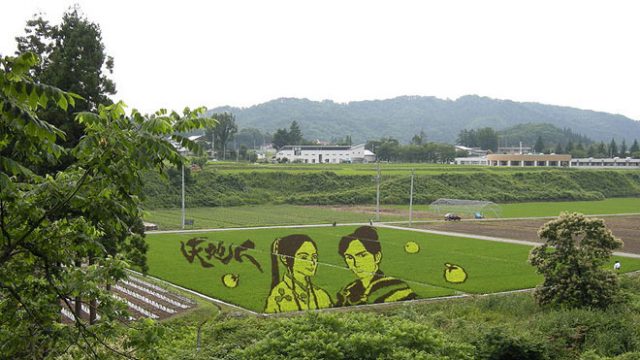Trust the Japanese to give a beautiful twist even to the mundane. Visit Inakadate, a village in Aomori at the northern end of the Honshu mainland of Japan, any day up to October 12, 2015 and you will know how. This farming village is home to high-yielding rice paddy fields. So the village tourism office introduced ‘rice farming tour’ in 1993. To promote the tour, the tourism office drew huge characters of in different colours onto the paddy at the back of the town hall. Soon Inakadate’s rice paddy art became a core event. To create rice paddy art, famers combine a range of colorful rice strains along with the traditional green. These different varieties of rice grow naturally, without the use of artificial colorants. Tsugaru Roman, for instance, is green. Yukiasobi rice is white and Beniasobi rice is red. Other ancient strains of rice are used for purple and yellow. The rice paddy artists initially started with simple patterns, evolving to more complex and elaborate ones over time. You can see the artwork from the observatory towers.
Rice Paddy Art of Japan
See how Japanese farmers create landscape art with the rice paddies

Rice Paddy Art of Japan
Rice Paddy Art of Japan



